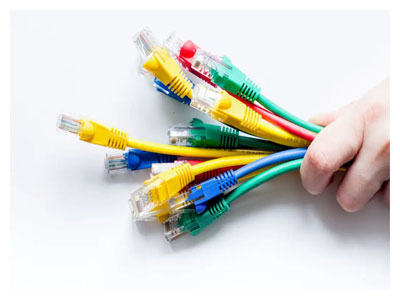Key Takeaway
There are three types of Fast Ethernet: 10Base-T, 100Base-FX, and 100Base-TX. These standards define how data is transmitted over the network at speeds up to 100 Mbps.
10Base-T uses twisted-pair copper cables and is common in basic networking setups. 100Base-FX relies on fiber optic cables, making it suitable for long-distance and high-reliability connections. 100Base-TX is the most widely used, employing two pairs of twisted-pair cables for cost-effective and efficient data transfer. Each type is chosen based on the network’s needs for speed, distance, and reliability.
Introduction to Fast Ethernet: 10Base-T, 100Base-T, and 1000Base-T
Fast Ethernet includes three primary standards: 10Base-T, 100Base-T, and 1000Base-T, each referring to the speed and type of cable used.
10Base-T is the oldest standard, operating at 10 Mbps. It uses twisted-pair cables and is suitable for basic applications like small-scale data sharing or device control.
100Base-T, often called Fast Ethernet, increases the speed to 100 Mbps, making it ideal for larger networks requiring moderate data transfer rates.
1000Base-T, or Gigabit Ethernet, offers speeds of up to 1 Gbps. It supports data-intensive tasks like real-time monitoring and IoT integration, making it essential for modern industrial environments.
Each type has evolved to address specific networking challenges, providing reliable communication across various scenarios.

10Base-T, 100Base-T, and 1000Base-T H2: Key Features and Speed Comparisons of Fast Ethernet Types
The primary distinction between these types lies in their speed, but other features also play a crucial role in determining their suitability.
10Base-T, with its 10 Mbps speed, is reliable but limited by today’s standards. It’s best for legacy systems or networks with minimal data requirements. Its low cost makes it a practical choice for simple setups.
100Base-T introduced faster communication, capable of handling medium-sized networks. It supports longer distances and more devices, making it the standard for many industries in the late 1990s.
1000Base-T is the fastest, offering speeds 10 times that of 100Base-T. It handles real-time data transfer, high-resolution video streaming, and large-scale automation seamlessly. Its backward compatibility with older standards ensures easy integration into existing networks.
The choice between these types depends on the network’s speed requirements, data volume, and future scalability needs.
Key Features and Speed Comparisons of Fast Ethernet Types H2: Best Use Cases for Each Fast Ethernet Type in Industrial Settings
Key Features and Speed Comparisons of Fast Ethernet Types
H2: Best Use Cases for Each Fast Ethernet Type in Industrial Settings
Best Use Cases for Each Fast Ethernet Type in Industrial Settings H2: How Fast Ethernet Supports Network Scalability
One of the most significant advantages of Fast Ethernet is its ability to scale with network growth. As industrial networks expand, adding new devices or integrating advanced systems becomes inevitable. Fast Ethernet standards provide the flexibility needed to handle this growth.
For instance, 100Base-T networks can gradually upgrade to 1000Base-T by replacing switches and routers, ensuring minimal disruption. The backward compatibility of 1000Base-T with older standards allows seamless integration, extending the network’s lifespan without significant costs.
Additionally, the modular nature of Fast Ethernet ensures that devices can be added incrementally, avoiding the need for complete overhauls. This scalability is critical in industries where networks must evolve to accommodate IoT devices, real-time analytics, and smart manufacturing technologies.
How Fast Ethernet Supports Network Scalability H2: Future Evolution of Fast Ethernet Technologies
While Fast Ethernet has been a reliable solution for decades, advancements in networking are pushing the boundaries of speed and performance. 10-Gigabit Ethernet and beyond are now entering industrial environments, offering ultra-high speeds for data-intensive applications like AI-driven analytics and cloud integration.
However, the transition doesn’t mean Fast Ethernet is obsolete. Its affordability, reliability, and scalability make it an enduring choice for many industrial networks. Hybrid solutions, combining Fast Ethernet with advanced options, are becoming common, ensuring both cost efficiency and high performance.
The future of Ethernet lies in balancing these standards to meet evolving industrial needs, ensuring networks are ready for the challenges of tomorrow.
Conclusion
Choosing the right Fast Ethernet type depends on your network’s current demands and future scalability needs. While 10Base-T works for basic setups, 100Base-T and 1000Base-T offer the speed and reliability required for modern industrial operations.
By understanding the features, use cases, and scalability options of these types, you can design a network that meets today’s requirements while being prepared for future advancements. Fast Ethernet remains a versatile and valuable tool in industrial networking.
